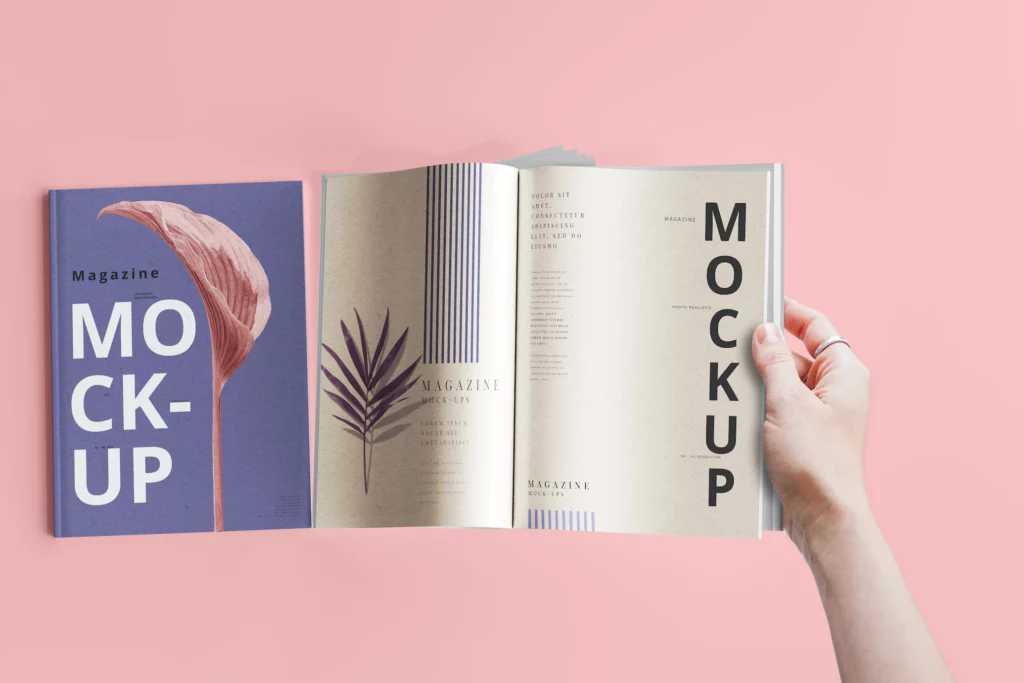In today’s fast-paced world, where attention spans are dwindling, it has become increasingly important for designers to create visually appealing and engaging content. One such medium is the booklet. Booklets serve as an effective way to communicate information concisely and attractively. However, it is crucial to know how to use a booklet maker like the one offered by Vista Create to make captivating designs that will help you achieve your goals.
Lets explore the art of booklet design by focusing on minimalist layouts, creative typography, and compelling visuals that effectively convey information and engage readers.
Embracing Minimalism in Layouts
Minimalism is a design philosophy that emphasizes simplicity and functionality. When applied to booklet design, it can help create a clean and organized layout that allows the content to shine. Here are some tips for achieving a minimalist layout:
- Whitespace: Whitespace, or negative space, is the empty area surrounding design elements. It plays a crucial role in creating a sense of balance and harmony in a layout. Generous use of whitespace can make your booklet look more professional and easier to read.
- Grid System: A grid system is a framework that helps to structure and align design elements. Using a grid can ensure consistency in your layout and enable readers to navigate through the content with ease. Stick to a simple grid with a limited number of columns to maintain a minimalist look.
- Hierarchy: Establishing a clear hierarchy in your design can guide readers’ eyes through the content and make it more digestible. Use size, color, and typography to differentiate headings, subheadings, and body text.
- Limited Color Palette: A minimalist design often features a limited color palette. Choose two or three colors that complement each other and use them consistently throughout the booklet. Keep your brand’s colors in mind, and try to use muted tones whenever possible. This will not only create a cohesive look but also make it easier to print.

Creative Typography for Engaging Content
Typography is another essential aspect of booklet design. The right choice of fonts can enhance the readability and aesthetic appeal of your content. Here are some tips for mastering typography in booklet design:
- Font Pairing: Combining different fonts can create visual interest and establish a hierarchy in your design. Pair a bold, eye-catching font for headings with a simple, easy-to-read font for body text. Ensure that the fonts you choose complement each other and don’t compete for attention.
- Legibility: Your choice of font should prioritize legibility. Avoid overly decorative or script fonts for body text, as they can be difficult to read. Also, consider factors like font size, line spacing, and letter spacing to ensure optimal readability.
- Contrast: Use contrast to your advantage by pairing light fonts with dark backgrounds or vice versa. This can make your text stand out and improve its overall readability.
- Consistency: Maintain consistency in your typography choices throughout the booklet. This will help create a cohesive look and make it easier for readers to follow the content.
Compelling Visuals for Effective Communication
Visual elements play a significant role in capturing readers’ attention and conveying information effectively. Here are some tips for incorporating compelling visuals in your booklet design:
- Photography: High-quality images can instantly elevate the look of your booklet. Choose images that are relevant to your content and visually appealing. Make sure to use high-resolution images to avoid pixelation when printed.
- Illustrations: Illustrations can add personality and charm to your booklet. They can also help explain complex concepts more simply. If you opt for illustrations, ensure they match the overall style and tone of your booklet.
- Infographics: Infographics are an excellent way to present data and statistics in a visually engaging manner. Use charts, graphs, and icons to break down complex information into easily digestible chunks.
- Iconography: Icons can help guide readers through your content and highlight important information. Choose simple, minimalist icons that complement your overall design aesthetic.
In conclusion, mastering the art of booklet design involves embracing minimalism in layouts, using creative typography, and incorporating compelling visuals. By following these tips, you can create a visually appealing and engaging booklet that effectively conveys information and captures your audience’s attention.

